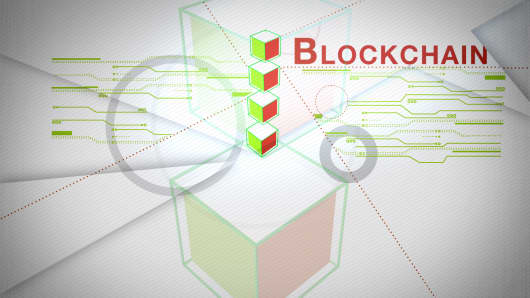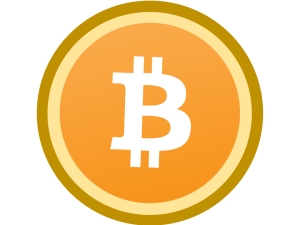Most people think of bitcoin, if they think about it at all, as a currency—a means of digital exchange, or perhaps a speculative investment.
But forget everything you know, because the technology underlying bitcoin has the potential to be a much greater disruptive force than the cryptocurrency itself. Investors and technologists think the technology could replace huge aspects of the financial and insurance industries, and eventually even corporate management teams. In fact, big names like Google and IBM are reportedly already looking to invest in applications.
“Bitcoin is a token, a currency, but that’s not all it is. That’s the first of many many applications of this blockchain technology,” said Jeff Garzik, one of five bitcoin core developers who have taken over maintenance of the technology from mysterious creator Satoshi Nakamoto. “[Currency] is not the killer app, it’s just the first app.”
How does it work? Meet the blockchain
The central insight behind bitcoin is its innovative blockchain—a decentralized ledger that records every verified transaction. As it stands, proponents say it is the most secure record-keeping technology ever devised; each piece of information is stored on an immutable time-stamped list, which is then replicated on other servers across the globe.
This chain lives in its entirety on hundreds of machines around the world—which helps ensure protection from corruption, technological or otherwise.
The term “blockchain” comes from the way information is stored: New transactions are stored on a “block” of data, and each block uses code to refer back to the preceding chunk of information—thereby creating a chain.
Within the world of bitcoin, the blockchain acts as a “register of deeds,” according to Garzik.
“I don’t store bitcoins, I store private keys that show I own bitcoins,” he said. “I don’t actually send bitcoins, I just change the name on the deed.”
The blockchain is what gives bitcoin much of its appeal as a digital currency. Not only is it a global ledger that can confirm transactions in about 10 minutes, but it is also transparent and essentially unchangeable.
What’s next? ‘The Great Bitcoin 2.0 Race’
Beyond just money, it’s the next series of applications that Garzik calls “the great bitcoin 2.0 race.”
Here’s the basic idea: If the blockchain is able to securely contain the record of bitcoin transactions, then it should be able to hold any information with the same benefit. Also, the technology has been subjected to years of scrutiny by both enthusiasts and skeptics.
Which leads to so-called “smart contracts.”
Here’s an example: “Smart” loans could automatically adjust interest rates based on the financial performance of a borrower. The contract’s code would need to include an automated observation of the key real world metrics—like the rate at which the borrower is paying off the loan. And while most commercial loans already have these provisions, they have to be manually reported and monitored, and enforcement may fall to the discretion of individual agents, or the courts, so the application of this technology would create major efficiencies.
“The potential to greatly reduce or even eliminate the need for litigation and courts may be the most attractive feature of smart contracts,” wrote Houman B. Shadab, co-director of New York Law School’s Center for Business and Financial Law. In a recent conference abstract, he added that the technology “in principle removes the potential for parties to have a dispute.”
A similar application would include “smart property,” such as a digital asset (or one day even a real-world product like a car) that would turn off if the smart contract is ever breached. The car example, which was cited by several technologists, would likely require something akin to a self-driving feature to return it to a dealership.
To be sure, similar technologies exist in other forms (Oracle’s PeopleSoft offers similar functionality, for example) but the blockchain innovation is that it allows the system to work without a trusted third party, theoretically cutting costs. Still, some have their doubts(warning: link has NSFW language) that the value of a decentralized trust-less ledger is all that useful.
Eventually, blockchain believers argue, smart contracts and property may replace company management to create a so-called decentralized autonomous organization—artificial intelligence that can churn out smart contracts for dealing with human customers and employees.
At least some are dreaming even bigger, imagining that blockchain technology could completely change how we trade securities.
The new Medici?
When online retailer Overstock began accepting bitcoins in January, many in the crypto community cheered the move as an important step in the currency’s eventual universal acceptance. What most didn’t realize, though, is that buying goods is not all Overstock CEO Patrick Byrne has in mind.
In an Oct. 6 announcement, Byrne revealed that he was planning a completely decentralized financial exchange using blockchain technology. Byrne, whose disdain of Wall Street is well documented, said he thinks this system will ultimately replace the New York Stock Exchange and the Nasdaq.
“We can bring a technology to market that does everything that Wall Street does,” he said. “We will have made the biggest financial disruption in 800 years.”
Harkening to the advent of modern banking in the Renaissance, Overstock has dubbed its project “Medici.” Byrne said it may eventually replace retail as the primary focus of his company.
Marketing and bluster aside, Medici offers a clear value proposition: An equities or bonds exchange that cuts out the middlemen could offer greater efficiencies and cost-savings—and allow for the layman to more readily participate in the market.
Although that task may seem daunting from a regulatory standpoint because it seeks to fully upend the current system, Byrne predicted he will be offering the first securities over his exchange in April as “early indications are actually quite positive” from regulators.
Any new exchange will be examined closely by the Securities and Exchange Commission to make sure it satisfies regulatory requirements for fair trading and adequate disclosure, Shadab said.
Also, the technological and regulatory hurdles facing Medici are not necessarily as trivial as Byrne thinks, said Charles Hoskinson, director of the Bitcoin Education Project, who has been involved with several blockchain projects.
“From a technology perspective I think it’s dumb, and from a regulatory perspective I think it’s very risky,” Hoskinson said, explaining that a decentralized system will probably not offer adequate regulatory oversight, and that storing every transaction on a blockchain is a needlessly resource-intensive strategy.
Byrne said he plans to issue a cryptosecurity called “O-coin” as the first on Medici. It would be “an approximation of the legal and common rights” of Overstock’s common stock, but it would only be a small offering, he said.
While the technological infrastructure for many of these applications have not been built yet, groups with names like Counterparty and Ethereum are now working to do just that. And while many of these developers have converted into foundations for the spread of their protocols, their work has reportedly attracted interest from tech investors.
One source with knowledge of Ethereum’s beginnings said that investment offers valued the project at about $500 million, and that Google Ventures was one of the interested parties. “That’s a big number isn’t it? That’s an impressive number?” Ethereum Chief Communications Officer Stephan Tual said when asked about the figure, before adding that “I don’t think the concept would work if we had accepted money.”
Though major industry moves have yet to be announced, most in the space said they are confident that the “great bitcoin 2.0 race” is already fomenting significant corporate interest—including from the likes of IBM, which has publicly announced it is exploring blockchain as a way to connect an “Internet of things.”
Despite his anti-Wall Street rhetoric, Overstock’s Byrne said major financial institutions are already exploring working with Medici. And a recent conference on blockchain tech regulation in New York featured a number of claims of major (but as-yet unannounced) partnerships.
“We’ll be talking about the pre-blockchain and post-blockchain way of doing business,” said Sam Yilmaz, managing partner at Decentralized Applications Fund, reflecting on some of the uses discussed at the conference.
But even those who aren’t attending crypto conferences—those who do not count themselves among the bitcoin believers—may see the value of the blockchain (the Bank of England and the CIO of UBS have both commented recently on the potential of the technology).
“Bitcoin is a solution to a problem that doesn’t exist, but the technology is utterly fascinating,” said Jeffrey Robinson, author “BitCon: The Naked Truth about Bitcoin,” which as the title suggests is a scathing indictment of the promises surrounding the digital currency.
“Blockchain technology will change the world,” he said.
Source : http://www.cnbc.com/id/102178309
Click on the bitcoin logo below to buy, use or accept bitcoin. Unocoin is India’s most popular bitcoin wallet.
To read the bitcoin white paper, visit: https://bitcoin.org/bitcoin.pdf








